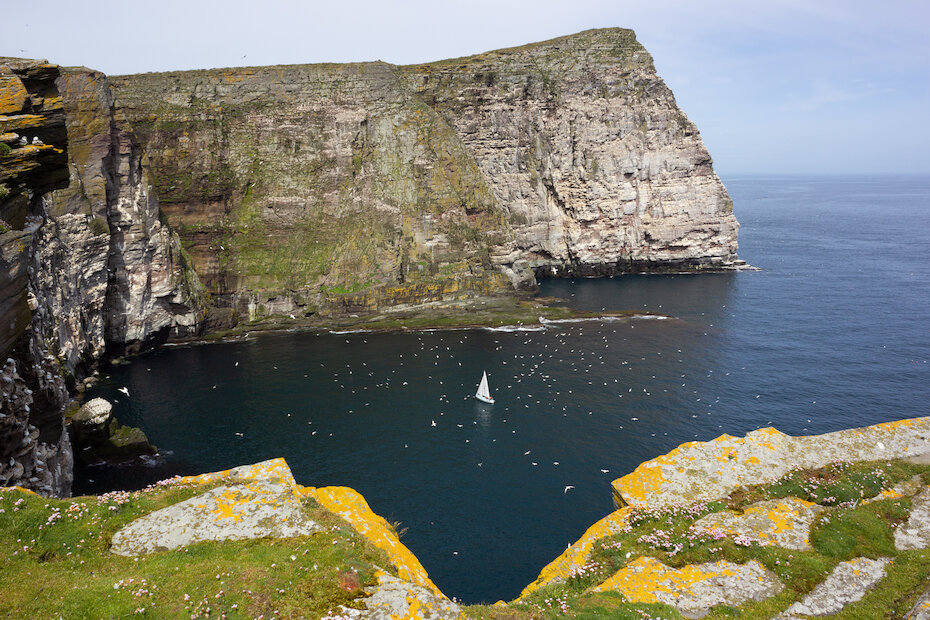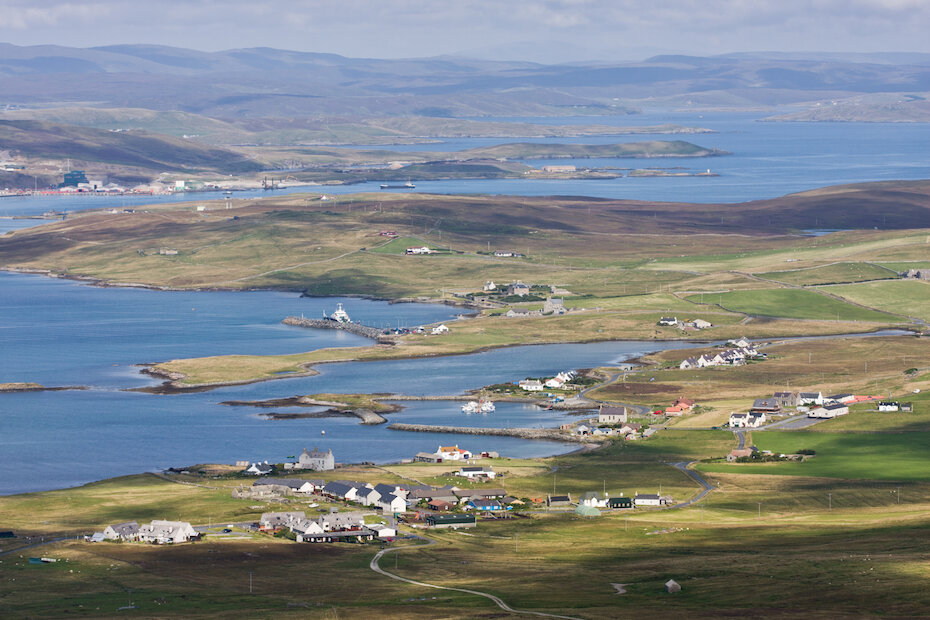A quick introduction
Bressay shelters Lerwick harbour from the North Sea and for many centuries Bressay Sound has been a port of refuge for shipping, since long before Lerwick was founded in the 17th century.
Vikings landed on Bressay in the 800s, taking shelter in the shallow inlets of Leira Voe, which translates as 'muddy creek'. A few centuries later, in the 1400s, the Dutch used Bressay as their main harbour. Each June, up to 2,000 busses (twin-masted fishing boats) would visit Bressay Sound for the herring fishery. It was said that at times you could cross from Bressay to the Mainland by stepping from boat to boat.
The success of the herring fishery saw Lerwick establish itself as Shetland's main town, succeeding Scalloway as the islands' capital. While Lerwick's population grew, Bressay remained a rural community. Today, it is home to around 360 people.
Noss, meanwhile, is thought to be a relatively new island. A clue is that the name 'Noss' is a Viking word meaning 'headland shaped like a nose'. If it had been an island when the Vikings arrived in the 9th century they would certainly have called it 'Nossay' - 'island shaped like a nose'.
The island has been settled by people for at least 4,000 years and has considerable archaeological interest. Today it is uninhabited except during the summer when wardens live on the island.
How to get to Bressay and Noss
The Bressay ferry sails from Albert Buildings in the centre of Lerwick every hour, with later sailings scheduled on Friday and Saturday nights. See the ferry services website for a full timetable.
There are two ways to experience Noss: excursion boat from Lerwick or the ferry from Bressay. Find out more about the excursions on our Trips and Tours page.
Or, if you're on Bressay, you can take the three-minute Noss Sound ferry, which operates every day except Mondays and Thursdays (weather and sea conditions permitting) from May to late August between 10am and 5pm. More information is available on our Noss National Nature Reserve page.
Where to stay
Bressay has a hotel and a range of self-catering accommodation available to book. There is no accommodation available on Noss.



